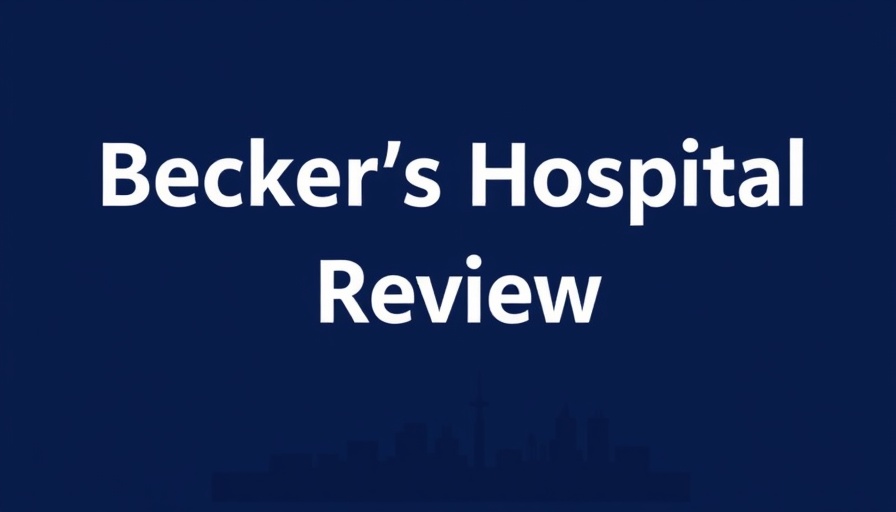
Legislation Transformation: The Rise of the 'Physician Associate'
In a groundbreaking move for healthcare professionals, Maine has officially changed the title of “physician assistant” to “physician associate,” making it the second state in the U.S. to adopt this term. Passed on June 2 and enacted on June 16, the legislative change marks a significant step forward in the identity and recognition of physician associates. This shift comes after two years of dedicated advocacy by the Maine Academy of Physician Associates, reflecting a growing acceptance of the evolving role these professionals play in the evolving landscape of healthcare.
The Advocacy Behind the Title Change
Kathleen Moneghan, PA-C, vice president of the association, expressed excitement about the change, emphasizing its potential to enhance patient relationships. “It is an exciting time to be a PA, and we can’t wait to see the positive change this has with our patients and with our role in the healthcare system,” she stated in a release. This enthusiasm echoes the sentiments of physician associates nationwide, as it aligns with a broader effort to enhance their stature within healthcare teams, ultimately leading to better patient care.
Understanding Why This Matters
The change from “physician assistant” to “physician associate” is more than just a title change; it’s a reflection of the shifting dynamics of healthcare roles. Increasingly, healthcare practices are recognizing that the professional contributions of physician associates go well beyond traditional support roles. They are often involved in decision-making processes and direct patient care, making them essential team members that enhance practice efficiency solutions and overall patient engagement tools.
Looking Ahead: The Future of Physician Associates
While Oregon took the initiative to become the first state to officially adopt the term in April 2024, the path to further acceptance at the state and federal levels is anticipated to be a long one. The American Association of Physician Associates (AAPA), which officially adopted the term in 2021, acknowledges that while many state chapters have embraced the title, navigating the legal landscape can be challenging. As we look towards the future, it's crucial for stakeholders in the healthcare system to consider how this change can positively impact workforce dynamics, such as improving employee health benefits and enhancing clarity on Medicare reimbursement rates for their services.
Impact on Healthcare Delivery: A Closer Examination
The introduction of the “physician associate” designation has implications not just for professional identities but also for the healthcare delivery system as a whole. By redefining roles and promoting a clearer understanding of responsibilities, practices can foster better collaboration and improve patient care. Enhancements in practice automation, particularly in telehealth revenue generation and voice AI agents for patient communications, will further support the new roles that physician associates can play. This collaborative approach encourages a comprehensive view of healthcare that prioritizes both efficiency and quality, ultimately benefiting all stakeholders involved.
Building a Community of Physician Associates
The movement to enhance the title and identity of physician associates is also a testament to the strength of community and professional alliances. Peer groups, networking initiatives, and continued education among healthcare providers can facilitate knowledge exchange, empower advocacy for legislative changes, and promote best practices in patient care, pharmacy profitability, and practice revenue optimization. The support for each other will not only enhance individual practices but will serve as a foundation for a robust healthcare community committed to innovation and excellence.
Create Impactful Change: Take Action Today
As the landscape of health care evolves, so too should the roles within it. The changes being made in titles and responsibilities open new doors for patient-centric care and enhanced professional satisfaction. Health organizations and practices should not only adopt these changes but actively champion the professional development of physician associates. Advocates are encouraged to engage in discussions on this topic, suggesting practical insights for integrating these professionals into their teams. Collectively, we can leverage the excitement surrounding these changes to create impactful structural improvements in the healthcare system.
 Add Row
Add Row  Add
Add 




Write A Comment